 W
WFrederic "Fred" Anderson was a provincial level politician from Alberta, Canada. He was elected to the Legislative Assembly of Alberta holding a seat in the Calgary electoral district from 1935 to 1948 as a member of the Social Credit caucus.
 W
WIvor (Jack) Ayre was a Canadian pianist and a member of the Dumbells, which entertained Canadian troops during the First World War. He continued to perform with the Dumbells when they reformed as a civilian touring group performing songs, skits and musicals across Canada, the United States and the United Kingdom.
 W
WJohn Henry Foster Babcock was, at age 109, the last known surviving veteran of the Canadian military to have served in the First World War and, after the death of Harry Patch, was the conflict's oldest surviving veteran. Babcock first attempted to join the army at the age of fifteen, but was turned down and sent to work in Halifax until he was placed in the Young Soldiers Battalion in August 1917. Babcock was then transferred to the United Kingdom, where he continued his training until the end of the war.
 W
WWilliam George "Billy" Barker, was a Canadian First World War fighter ace and Victoria Cross recipient. He is the most decorated serviceman in the history of Canada.
 W
WColin Fraser Barron was a Canadian recipient of the Victoria Cross, the highest and most prestigious award for gallantry in the face of the enemy that can be awarded to British and Commonwealth forces. He was born at Boyndie, Banffshire, Scotland, a son of Margaret Walker Barron, a domestic servant. He was raised in a large household by his grandparents Joseph Barron & Mary Barron along with his brother Alexander Barron and many other half-siblings and aunts and uncles. He emigrated to Canada in 1910, and enlisted in the Canadian Expeditionary Force in 1914.
 W
WJoseph Ernest Barss was an ice hockey player and coach. He was the first head coach of the Michigan Wolverines men's ice hockey team, holding the position from 1922 to 1927. He was later employed as a medical doctor and surgeon in the Chicago area.
 W
WJohn Samuel Bourque was a Quebec politician, Cabinet Minister, military member and businessman. He was the Member of Legislative Assembly of Quebec for the riding of Sherbrooke for 25 years.
 W
WAlexander Picton Brereton was a Canadian recipient of the Victoria Cross, the highest and most prestigious award for gallantry in the face of the enemy that can be awarded to British and Commonwealth forces.
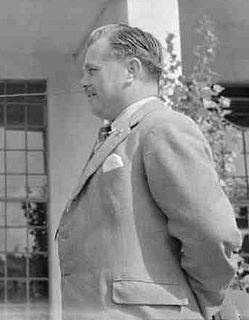 W
WSir William Heygate Edmund Colborne Butlin was a South African-born British entrepreneur whose name is synonymous with the British holiday camp. Although holiday camps such as Warner's existed in one form or another before Butlin opened his first in 1936, it was Butlin who turned holiday camps into a multimillion-pound industry and an important aspect of British culture.
 W
WHugh Cairns, was a Canadian recipient of the Victoria Cross, the highest and most prestigious award for gallantry in the face of the enemy that can be awarded to British and Commonwealth forces.
 W
WThomas Clare was an English international footballer, who played at right-back, and football manager.
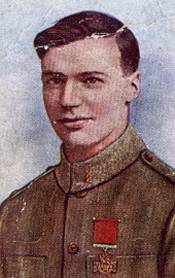 W
WLionel (Leo) Beaumaurice Clarke was a Canadian recipient of the Victoria Cross, the highest and most prestigious award for gallantry in the face of the enemy that can be awarded to British and Commonwealth forces.
 W
WFrederick George Coppins was a Canadian recipient of the Victoria Cross, the highest and most prestigious award for gallantry in the face of the enemy that can be awarded to British and Commonwealth forces. He was born in England and served with the Royal West Kent Regiment before the First World War. He then emigrated to Canada, settling in Winnipeg.
 W
WJohn Bernard Croak VC was a soldier in the Canadian Expeditionary Force during the First World War and posthumous recipient of the Victoria Cross, the highest and most prestigious award for gallantry "in the face of the enemy" that can be awarded to British and Commonwealth forces. He earned the award for events that occurred during the Battle of Amiens in August 1918. A park and elementary school was named in his memory at Glace Bay, Nova Scotia.
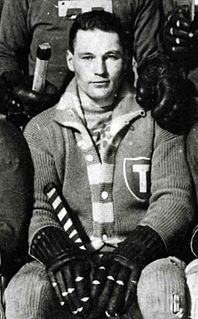 W
WAllan McLean "Scotty" Davidson was a Canadian ice hockey player and soldier. He was considered one of the top wingers of the game's early years. He led his Kingston junior team to two Ontario Hockey Association championships in 1910 and 1911, when he moved to Calgary for the 1911–12 season and led the Calgary Athletics senior team to the Alberta provincial championship. Davidson turned professional with the Toronto Blueshirts in 1912 and was among the National Hockey Association's leading scorers the following two seasons. He captained Toronto to the Stanley Cup championship in 1914.
 W
WEdmund De Wind, was a British Army officer during the First World War, and posthumous recipient of the Victoria Cross, the highest and most prestigious award for gallantry in the face of the enemy that can be awarded to British and Commonwealth forces.
 W
WCaptain Royce Coleman Dyer, was a Canadian soldier who fought during World War I and had led a Russian unit during the North Russia Intervention which was part of the Allied Intervention in Russia after the October Revolution. He died of broncho-pneumonia on December 30, 1918, while serving in Russia.
 W
WFrederick Fisher, was a Canadian recipient of the Victoria Cross (VC), the highest and most prestigious award for gallantry in the face of the enemy that can be awarded to British and Commonwealth forces.
 W
WHerman James Good, VC was a soldier in the Canadian Expeditionary Force during the First World War and a recipient of the Victoria Cross, the highest award for gallantry "in the face of the enemy" that can be awarded to British and Commonwealth forces. Good received the award for his actions during the Battle of Amiens in August 1918, while fighting around Hangard Wood. Good survived the war and returned to Canada. After his discharge from the military in 1919, Good worked in the lumber industry and then later a fish and game warden. He died of a stroke in 1969, at the age of 81.
 W
WFrederick William Hall, was an Irish-Canadian recipient of the Victoria Cross, the highest and most prestigious award for gallantry in the face of the enemy that can be awarded to British and Commonwealth forces.
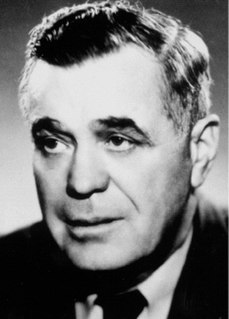 W
WWilliam George Hardy was a Canadian professor, writer, and ice hockey administrator. He lectured on the Classics at the University of Alberta from 1922 to 1964, and served as president of the Canadian Authors Association. He was an administrator of Canadian and international ice hockey, and served as president of the Alberta Amateur Hockey Association, the Canadian Amateur Hockey Association (CAHA), the International Ice Hockey Association, and the International Ice Hockey Federation.
 W
WKarl Brooks Heisey was a well-known Canadian mining engineer and mining executive in the 1930s. Heisey pioneered the exploration and development of the Sanshaw/Red Lake metal deposits located in northwest Ontario. The Red Lake Mine is one of the richest gold mines in the world, still in production today with annual production of 600,000 ounces gold and over 11 million ounces produced to date.
 W
WFrederick Hobson VC was a soldier in the Canadian Expeditionary Force, and recipient of the Victoria Cross, the highest military award for gallantry in the face of the enemy given to British and Commonwealth forces, during the First World War.
 W
WThomas William Holmes VC was a soldier in the Canadian Expeditionary Force, and was a Canadian recipient of the Victoria Cross, the highest and most prestigious award for gallantry in the face of the enemy that can be awarded to British and Commonwealth forces, during the First World War. Holmes is the youngest Canadian to ever win the Victoria Cross.
 W
WHarold Adams Innis was a Canadian professor of political economy at the University of Toronto and the author of seminal works on media, communication theory, and Canadian economic history. He helped develop the staples thesis, which holds that Canada's culture, political history, and economy have been decisively influenced by the exploitation and export of a series of "staples" such as fur, fishing, lumber, wheat, mined metals, and coal. The staple thesis dominated economic history in Canada from the 1930s to 1960s, and continues to be a fundamental part of the Canadian political economic tradition.
 W
WJeremiah "Jerry" Alvin Jones was a Black Canadian soldier who served in World War I. He was recommended for a Distinguished Conduct Medal but there is no record of him having received it. His treatment has been seen as an example of the lack of recognition accorded to Black Canadian soldiers. Campaigns to have him receive the medal posthumously eventually resulted in his being awarded the Canadian Forces Medallion for Distinguished Service on February 22, 2010.
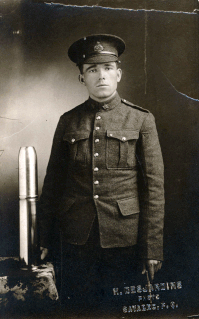 W
WJoseph Thomas Keable, VC, MM was a Canadian soldier during the First World War. Keable was a recipient of the Victoria Cross, the highest and most prestigious award for gallantry in the face of the enemy that can be awarded to British and Commonwealth forces. He was the first French Canadian soldier to be decorated with the VC and Military Medal.
 W
WGeorge William Kennedy was a Scottish footballer. He played at left half or centre half.
 W
WJohn Chipman Kerr VC, was a Canadian recipient of the Victoria Cross, the highest and most prestigious award for gallantry in the face of the enemy that can be awarded to British and Commonwealth forces.
 W
WCecil John Kinross VC was a Canadian soldier in World War I. Kinross was a recipient of the Victoria Cross, the highest and most prestigious award for gallantry in the face of the enemy that can be awarded to British and Commonwealth forces. He was only nineteen when it was awarded to him, making him the second youngest Victoria cross recipient ever.
 W
WArthur George Knight VC was an English-Canadian soldier. Knight was a recipient of the Victoria Cross, the highest award for gallantry in the face of the enemy that can be awarded to British and Commonwealth forces. Knight was one of seven Canadian to be awarded the Victoria Cross for their actions on one single day, 2 September 1918, for actions across the 30 km long Drocourt-Quéant Line near Arras, France. The other six recipients were Bellenden Hutcheson, William Henry Metcalf, Claude Joseph Patrick Nunney, Cyrus Wesley Peck, Walter Leigh Rayfield and John Francis Young.
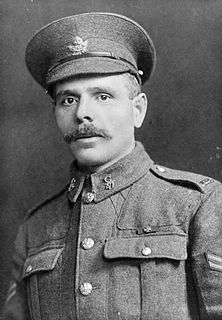 W
WFilip Konowal VC was a highly decorated Ukrainian Canadian soldier. He is the only ethnic Eastern European recipient of the Victoria Cross, the highest award for gallantry in the face of the enemy given to British and Commonwealth forces. He was also entitled to the Cross of St George, 4th Class.
 W
WSergeant Percivale St-Helier LeSueur was a Canadian senior and professional ice hockey goaltender. He was a member of the Smiths Falls Seniors for three years, with whom his performance in a 1906 Stanley Cup challenge series attracted the attention of his opponents, the Ottawa Silver Seven. Although his team lost the series, LeSueur excelled in goal, keeping the games close. Nine days after the defeat, he joined the Silver Seven and played in a challenge match against the Montreal Wanderers. He remained with Ottawa through the 1913–14 season where he served as team captain for three seasons, and assumed coaching duties in his final season with the team.
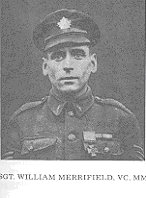 W
WWilliam Merrifield VC, MM was an English-born Canadian recipient of the Victoria Cross (VC), the highest and most prestigious award for gallantry in the face of the enemy that can be awarded to British and Commonwealth forces. A soldier with Canadian Expeditionary Force during the First World War, he was awarded the VC for his actions on 1 October 1918, during the Battle of the Canal du Nord. Earlier in the war he had been awarded the Military Medal.
 W
WWilliam Henry Metcalf VC, MM & Bar was an American soldier in the Canadian Army during World War I. Metcalf was a recipient of the Victoria Cross, the highest award for gallantry in the face of the enemy that can be awarded to British and Commonwealth forces. Although Metcalf was born in the United States, Metcalf is also considered Canadian since he joined the Canadian Expeditionary Force in 1914. He is one of only six Americans to receive the Victoria Cross.
 W
WWilliam Johnstone Milne VC was a First World War Canadian soldier. Milne was a posthumous recipient of the Victoria Cross, the highest and most prestigious award for gallantry in the face of the enemy that can be awarded to British and Commonwealth forces. He received the VC for his actions at the Battle of Vimy Ridge on 9 April 1917.
 W
WHarry Garnet Bedford Miner VC was a soldier in the Canadian Expeditionary Force during the First World War and posthumous recipient of the Victoria Cross, the highest and most prestigious award for gallantry "in the face of the enemy" that can be awarded to British and Commonwealth forces. He earned the award for events that occurred during the Battle of Amiens in August 1918. There are two plaques in his memory in his hometown, Cedar Springs, Ontario and his medals are displayed in a local museum.
 W
WGeorge Harry Mullin was an American-Canadian soldier in the Canadian army. Mullin was a recipient of the Victoria Cross, the highest award for gallantry in the face of the enemy that can be awarded to British and Commonwealth forces.
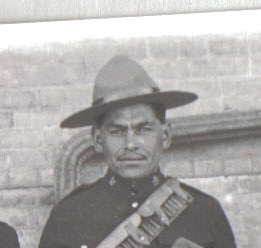 W
WHenry Louis Norwest (Northwest) MM & Bar was a distinguished Canadian sniper in World War I.
 W
WClaude Joseph Patrick Nunney was a Canadian soldier. Nunney was a recipient of the Victoria Cross, the highest award for gallantry in the face of the enemy that can be awarded to British and Commonwealth forces. Born in Hastings in East Sussex, he was sent to Canada as a home child.
 W
WMichael James O'Rourke, was an Irish-Canadian soldier and dockworker. O'Rourke was a recipient of the Victoria Cross, the highest and most prestigious award for gallantry in the face of the enemy that can be awarded to British and Commonwealth forces.
 W
WJohn George Pattison was a Canadian soldier. Pattison was a recipient of the Victoria Cross, the highest and most prestigious award for valour in the face of the enemy that can be awarded to British and Commonwealth forces.
 W
WHarold Reginald Peat was a Canadian soldier and author.
 W
WFrancis Pegahmagabow MM & two bars was a Canadian First Nations soldier, politician and activist. He was the most highly decorated Indigenous soldier in Canadian military history and the most effective sniper of the First World War. Three times awarded the Military Medal and seriously wounded, he was an expert marksman and scout, credited with killing 378 Germans and capturing 300 more. Later in life, he served as chief and a councillor for the Wasauksing First Nation, and as an activist and leader in several First Nations organizations. He corresponded with and met other noted aboriginal figures including Fred Loft, Jules Sioui, Andrew Paull and John Tootoosis.
 W
WPrivate George Lawrence Price was a Canadian soldier. He is traditionally recognized as the last soldier of the British Empire to be killed during the First World War.
 W
WJames (Jimmy) Cleland Richardson VC was a Canadian recipient of the Victoria Cross, the highest and most prestigious award for gallantry in the face of the enemy that can be awarded to British and Commonwealth forces.
 W
WJames Peter Robertson was a Canadian recipient of the Victoria Cross, the highest and most prestigious award for valour in the face of the enemy that can be awarded to British and Commonwealth forces.
 W
WPte. Andrew Ross was a Scottish rugby union player from Edinburgh. He worked in the Merchant Navy as a marine engineer. He played for Royal High School FP and was capped several times for Scotland between 1905 and 1909.
 W
WEllis Wellwood Sifton was a Canadian soldier. Sifton was a recipient of the Victoria Cross, the highest and most prestigious award for gallantry in the face of the enemy that can be awarded to British and Commonwealth forces.
 W
WRobert Spall, was a Canadian recipient of the Victoria Cross, the highest and most prestigious award for gallantry in the face of the enemy that can be awarded to British and Commonwealth forces.
 W
WJames Cameron Watson was a Canadian politician, electrician and 25th Mayor of Calgary.
 W
WJohn Francis Young was a Canadian soldier who served in the First World War. Young was a recipient of the Victoria Cross, the highest award for gallantry in the face of the enemy that can be awarded to British and Commonwealth forces. Young was one of the seven Canadians who were awarded the Victoria Cross for their actions on one single day, 2 September 1918, for actions across the 30 km long Drocourt-Quéant Line near Arras, France. The other six were Bellenden Hutcheson, Arthur George Knight, William Metcalf, Claude Joseph Patrick Nunney, Cyrus Wesley Peck and Walter Leigh Rayfield.
 W
WRaphael Louis Zengel was an American-born Canadian recipient of the Victoria Cross, the highest and most prestigious award for valour in the face of the enemy that can be awarded to British and Commonwealth forces.